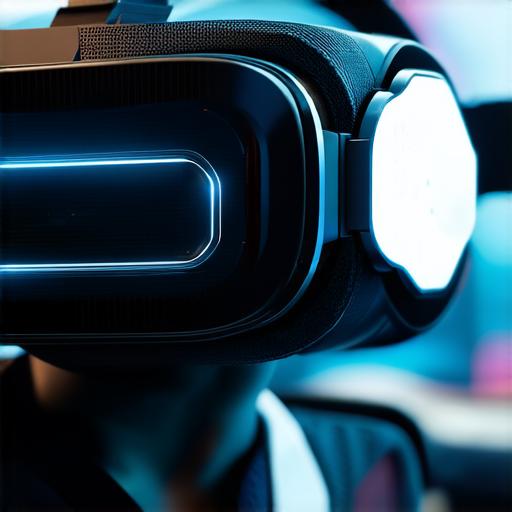Virtual reality (VR) technology has come a long way since its inception. It is now being implemented in various industries, including gaming, education, healthcare, and even real estate.
1. Wireless VR headsets:
Wireless VR headsets are a game-changer in the world of virtual reality. They offer more freedom of movement, as users can roam around their environment without being tethered to a computer or console.
This allows for a more immersive experience and eliminates the need for cables that can get tangled and become a hazard.
2. Eye-tracking technology:
Eye-tracking technology is another advancement in VR. It uses sensors to track the movement of your eyes, allowing for more accurate and natural interactions within virtual environments.
This can be particularly useful in gaming, where it can help create a more realistic experience by allowing players to look around their environment as if they were actually there.
3. Haptic feedback:
Haptic feedback technology is used to provide tactile sensations in VR, such as vibrations or pressure. It allows users to feel more connected to the virtual world around them, making for a more immersive experience.
For example, it can be used to simulate the feeling of water droplets on your skin when you are submerged in a virtual ocean.
4. 3D audio:
3D audio is another technology that is being integrated into VR systems. It uses sound sources located in different positions around the user, allowing for a more realistic and immersive audio experience.
This can be particularly useful in gaming, where it can help create a more dynamic and engaging environment by making sounds appear to come from specific locations.
5. Hand tracking:
Hand tracking technology is being used in VR to allow users to interact with virtual objects using their hands. It uses sensors to track the movement of your hands, allowing you to grab and manipulate objects within the virtual world.
This can be particularly useful in education, where it can be used to simulate laboratory experiments or surgical procedures.
6. Foveated rendering:
Foveated rendering is a technique that is being used to improve the performance of VR systems. It involves rendering higher resolution graphics only in the area that the user is looking, reducing the overall processing power required.
This can be particularly useful in applications where real-time performance is critical, such as in gaming or training simulations.

In conclusion, virtual reality technology is constantly evolving, and these advancements are just a few of the many new technologies that are being implemented. As VR continues to grow in popularity, we can expect to see even more innovative technologies emerge in the future.
